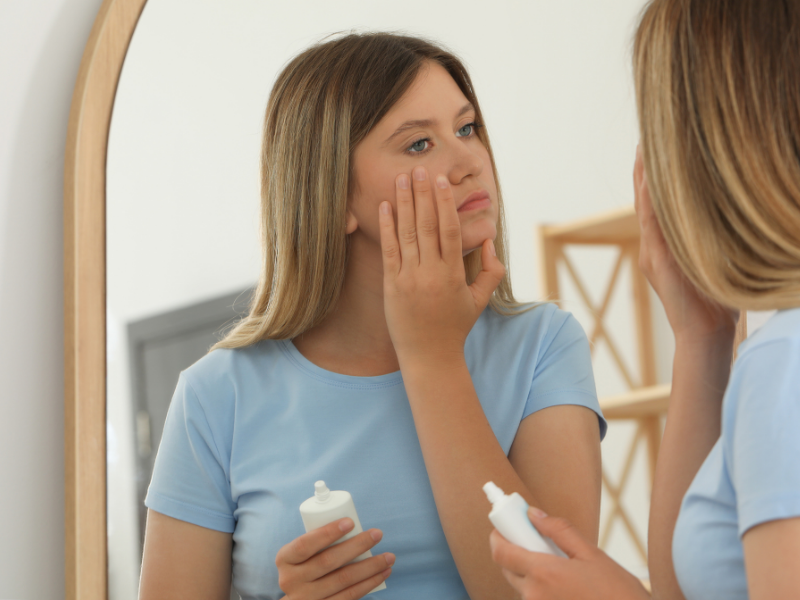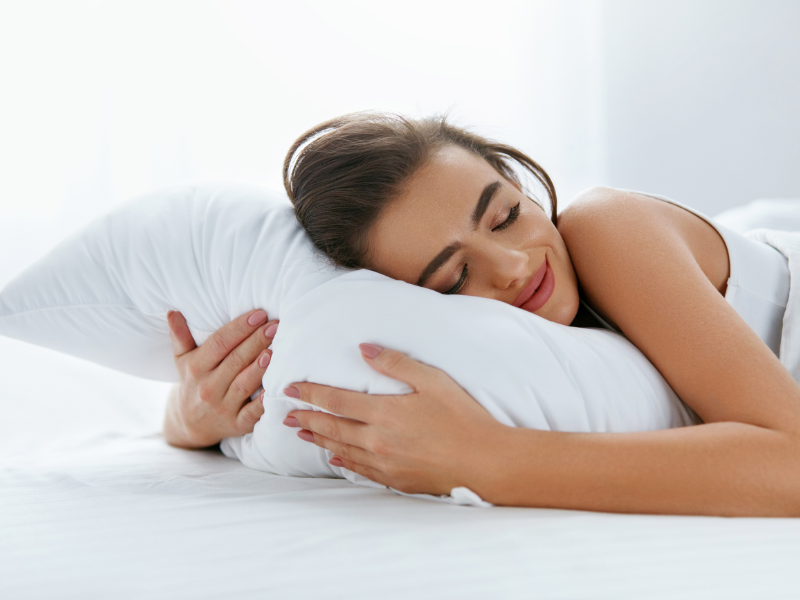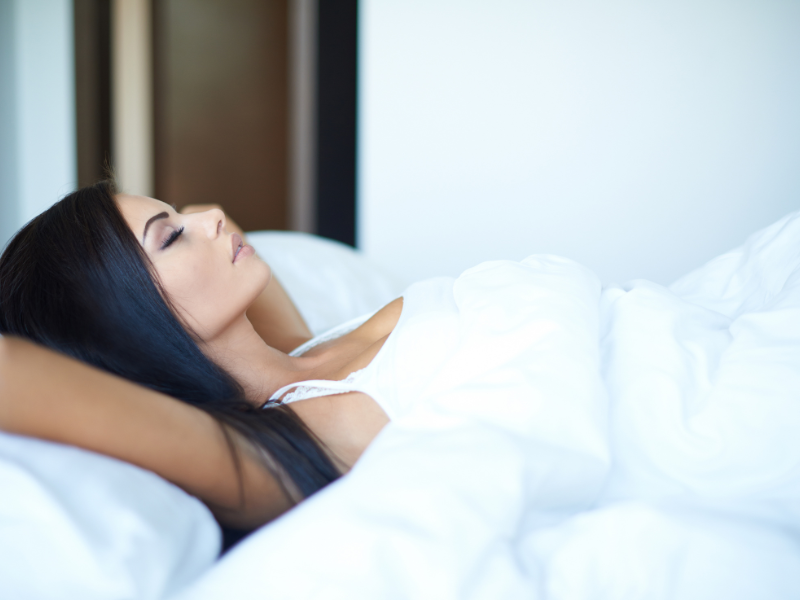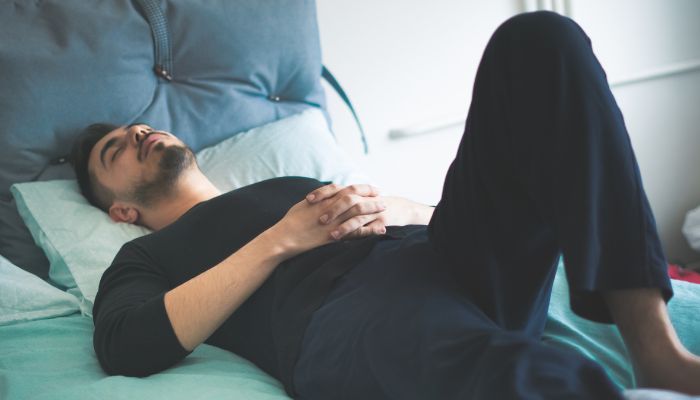


Have you ever noticed that your skin looks tired and dull after a night of not getting enough sleep? Not getting enough sleep can cause problems for your skin, like inflammation, breakouts, and slower healing.
On the other hand, getting enough sleep can help your skin produce collagen and give it the essential nutrients it needs to look radiant.
So, if you want to wake up with refreshed and glowing skin, keep reading to learn more about how sleep affects your skin.

Lack of sleep can lead to increased levels of cortisol, contributing to inflammation and breakouts on your skin. When you don’t get enough sleep, it can affect the health of your skin in multiple ways.
Dermatology experts have found that sleep deprivation can impair the skin’s ability to repair and regenerate, resulting in a dull complexion and slower healing of wounds. Additionally, poor sleep quality has been linked to increased signs of aging, such as fine lines, wrinkles, and uneven skin tone.
Inadequate sleep can also disrupt the balance of moisture in your skin, leading to dryness and increased sensitivity. It’s crucial to prioritize sleep and incorporate effective skincare routines to maintain healthy and youthful-looking skin.
Getting sufficient sleep has numerous benefits for your skin’s health and appearance. Beauty sleep not only helps you feel refreshed and rejuvenated, but it also plays a vital role in maintaining your skin’s overall health. When you prioritize quality sleep, it can positively affect the skin in several ways.
Getting enough sleep helps regulate the production of collagen, a protein that provides structure and elasticity to the skin. Adequate sleep promotes a healthy skin barrier, which helps to retain moisture and protect against external aggressors. Sufficient sleep allows for optimal blood flow to the skin, delivering essential nutrients and oxygen for a radiant complexion. Additionally, restful sleep supports the production of growth hormone, aiding in the repair and regeneration of skin cells. So, make sure to prioritize your beauty sleep for the sake of your skin’s health and appearance.
To improve the quality of your sleep and promote healthier skin, there are several tips you can follow.
First, establish a consistent sleep schedule by going to bed and waking up at the same time every day. This helps regulate your body’s internal clock and improves sleep quality.
Next, create a relaxing bedtime routine, such as taking a warm bath or practicing meditation, to signal to your body that it’s time to sleep.
Make your bedroom a sleep-friendly environment by keeping it cool, dark, and quiet. Avoid electronic devices, caffeine, and stimulating activities close to bedtime, as they can interfere with sleep.
Finally, invest in a comfortable mattress, pillows, and bedding to ensure optimal comfort and support during sleep.
While improving your sleep quality is crucial for maintaining healthy skin, it’s important to also consider other factors that can impact both your sleep and skin health.
Your skin affects your sleep, and vice versa. Certain skin conditions can disrupt your sleep, such as itchiness from eczema or discomfort from acne. On the other hand, lack of sleep can contribute to the development of wrinkles and sagging skin.

Establishing a consistent and balanced skincare routine is crucial for maximizing the benefits of beauty sleep. By taking care of your skin before bed, you can enhance the effects of sleep and improve your overall skin health.
Proper cleansing before sleep removes impurities and allows your skin to breathe, while nighttime skincare products aid in rejuvenation during sleep. Using skincare products with active ingredients can further enhance the effects of sleep on your skin.
A consistent skincare routine not only improves your skin function but also helps prevent dull skin caused by poor sleep quality. So, make sure to incorporate a skincare routine into your nightly ritual to reap the rewards of better sleep and healthier, more radiant skin.
Where a good sleep position leads to healthy, green skin, an incorrect sleeping position can easily take a toll on the skin, resulting in various skin problems like acne, wrinkles, aging, flatter cheeks, and marks.
According to the Aesthetic Study Journal, wrong sleeping positions lead to compression and tension of facial muscles. It results in the rapid development of sleep wrinkles, stealing the natural beauty and freshness of the face.
Your sleeping position plays an ultimate role in the appearance of the fine lines and wrinkles on your face.
The appearance of different marks depends on the time spent in a particular sleeping position.
An average human being changes position 1.6 times per hour in sleep, spending 65% of the time in the lateral position, 30% in the supine position, and the remaining 5% lying on the stomach.
So, here are the four most common sleeping positions and their effect on our skin.
Among all the sleeping positions, the back sleep is considered an ideal position to get some powerful Zzzs and yet gain a beautiful face.
It doesn’t lead to compression or torsion of facial muscles. Instead, sleeping on your back is a skin savior position that gives maximum span for skin breathing and blood circulation.
Moreover, the face isn’t in contact with either the pillow or bed sheet. Therefore, it doesn’t lead to the accumulation of bacteria and dirt from them on the face.

Sleeping on side is the most common sleeping position throughout the world. Research showed that 41% of the UK inhabitants sleep on their side in the fetal position.
However, it is not an ideal position to sleep in for healthy skin. When you sleep on your side, all your weight is on one half of the face. As a result, the skin cells receive anorexic conditions with less oxygen supply, leading to skin damage and less collagen production.
Moreover, due to pressure, side position leads to flattening of cheekbones, triggering wrinkles and fine lines due to friction.
Sleeping on the stomach is one of the worst sleeping positions to opt for as it leads to dull, flaky skin with lots of wrinkles and marks.
In this position, the face is pushed into the cushion, leaving skin with no space to breathe properly or blood circulation. Moreover, skin faces maximum shear, torsion, and compression, leading to a flatter face with clogged pores, rashes, acne, and under-eye bags.
A sound percentage of people sleep on their stomachs or side with one side of their face pushed into the cushion. It usually keeps the body at a 20 to 30-degree angle, allowing better blood circulation, thus leading to a fresh, glowy face.
But the problem is that one side of the face is pushed into the cushions, ultimately leading to obstruction of follicles in breathing and accumulation of bacteria on the face.
A general piece of advice is to change the pillowcases regularly.

The supine or prone position is the ideal sleeping position as it allows maximum blood circulation, fluid drainage, and cell breathing which lead to young youthful skin. But despite its numerous benefits, only 8% of people sleep on their back.
There are various benefits associated with sleeping on the back like:
However, sleeping on the back comes with a major con. It worsens ShutEye® which analyzes your sleep the whole night and then generates a report.
If you are suffering from sleep apnea, sleeping on the back is probably not a good-to-go option for you.

Now that you are up with the effects of different sleeping positions on the skin, and found that Supine Position is the ultimate secret to fresh, glowy skin with no wrinkles, let’s move towards some easy ways to achieve face-up snoozing.
So, here are a few handful approaches to help you sleep on your back:

Correct sleep position is directly linked with good sleep quality and healthy, younger-looking skin. The prone position (Sleeping on the back) works best for 90 percent of people as it is kinder not only on the skin but also on the back and neck.
But, in some situations, a supine position leads to various health issues.
Therefore, it is better to track your sleep quality using ShutEye® and train yourself to sleep in the most desired position accordingly.
Anson, G., Kane, M. A., & Lambros, V. (2016). Sleep Wrinkles: Facial Aging and Facial Distortion During Sleep. Aesthetic surgery journal, 36(8), 931–940. https://doi.org/10.1093/asj/sjw074
Axelsson, J., Sundelin, T., Ingre, M., Van Someren, E. J., Olsson, A., & Lekander, M. (2010). Beauty sleep: experimental study on the perceived health and attractiveness of sleep deprived people. BMJ (Clinical research ed.), 341, c6614. https://doi.org/10.1136/bmj.c6614
Chen, Y., & Lyga, J. (2014). Brain-skin connection: stress, inflammation and skin aging. Inflammation & allergy drug targets, 13(3), 177–190. https://doi.org/10.2174/1871528113666140522104422
Chiromed (2019) Healthy Sleep Positions for Adults [online]. https://www.chiro-med.ca/article/healthy-sleep-positions-for-adults#:~:text=If+you+sleep+on+your,rest+in+a+neutral+position.
Goesel Anson, Michael A.C. Kane, Val Lambros, Sleep Wrinkles: Facial Aging and Facial Distortion During Sleep, Aesthetic Surgery Journal, Volume 36, Issue 8, September 2016, Pages 931–940, https://doi.org/10.1093/asj/sjw074
Skarpsno, E. S., Mork, P. J., Nilsen, T. I. L., & Holtermann, A. (2017). Sleep positions and nocturnal body movements based on free-living accelerometer recordings: association with demographics, lifestyle, and insomnia symptoms. Nature and science of sleep, 9, 267–275. https://doi.org/10.2147/NSS.S145777